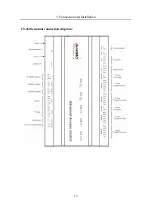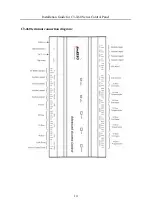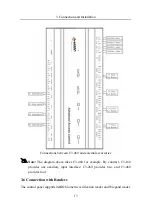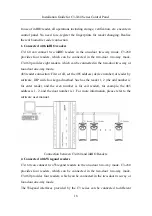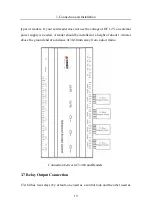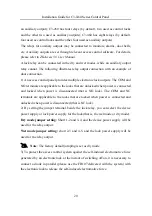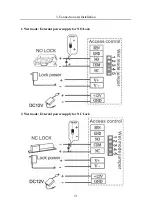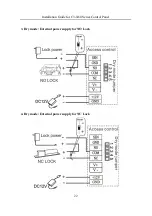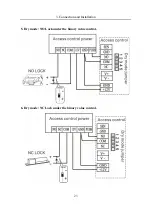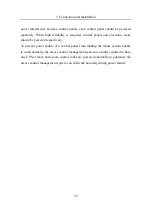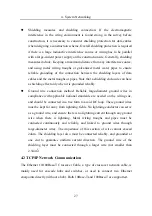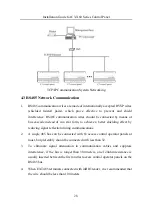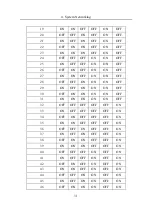
4. System Networking
Shielding measures and shielding connection: If the electromagnetic
interference in the wring environment is found strong in the survey before
construction, it is necessary to consider shielding protection for data cables
when designing a construction scheme. Overall shielding protection is required
if there is a large radioactive interference source or wiring has to be parallel
with a large-current power supply on the construction site. Generally, shielding
measures include: Keeping a maximum distance from any interference source,
and using metal wiring troughs or galvanized metal water pipes to ensure
reliable grounding of the connection between the shielding layers of data
cables and the metal troughs or pipes. Note that a shielding enclosure can have
a shielding effect only when it is grounded reliably.
Ground wire connection method: Reliable large-diameter ground wires in
compliance with applicable national standards are needed on the wiring site,
and should be connected in a tree form to avoid DC loop. These ground wires
must be kept far away from lightning fields. No lightning conductor can serve
as a ground wire, and ensure there is no lightning current through any ground
wire when there is lightning. Metal wiring troughs and pipes must be
connected continuously and reliably, and linked to ground wires through
large-diameter wires. The impedance of this section of wire cannot exceed
2ohm. The shielding layer also must be connected reliably, and grounded at
one end to guarantee uniform current direction. The ground wire of the
shielding layer must be connected through a larger wire (not smaller than
2.5mm
2
).
4.2 TCP/IP Network Communication
The Ethernet 10/100Base-T Crossover Cable, a type of crossover network cable, is
mainly used for cascade hubs and switches, or used to connect two Ethernet
end-points directly (without a hub). Both 10Base-T and 100Base-T are supported.
27

